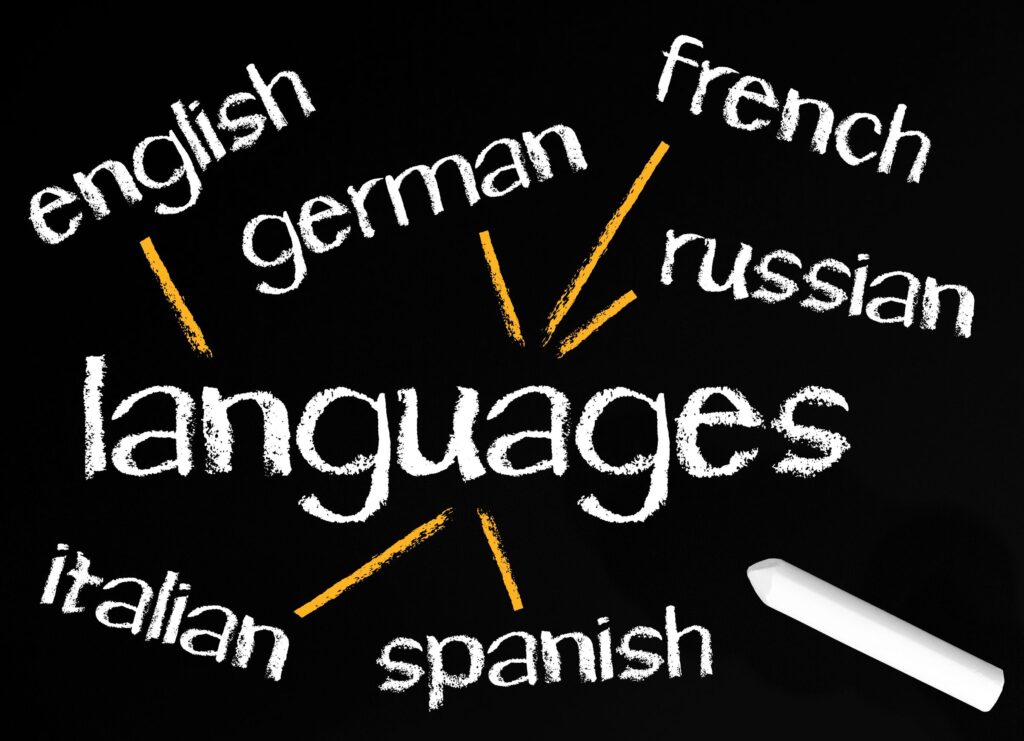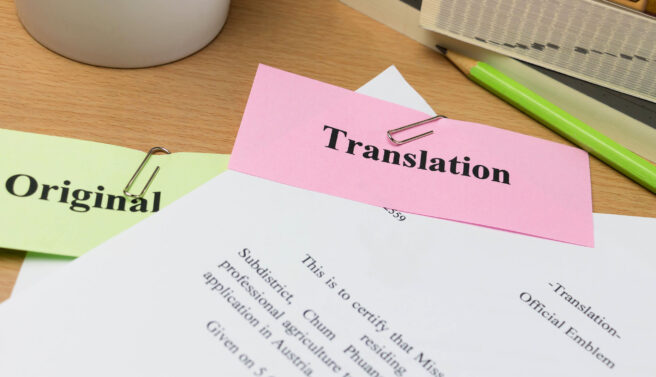Document translation is a tedious process that requires the knowledge, skill and experience of a translator. The translator needs excellent expertise in the source and target languages as well as linguistic sensitivity. The primary aim of translation is to convey the information as it is originally written in another language as faithfully and precisely as possible. Translation allows people to know different cultures, as translated texts become accessible.
In its normal course, translation takes some time because of the phases and processes involved in transforming a written document from one language to another.
The translation process
Any translation project goes through a standard, multi-step process to ensure that it passes the professional translation agency’s quality and accuracy standards and is followed by the firm’s human translators.
Broadly, the original document goes through these prime stages:
- Translation
- Editing
- Proofreading
However, there are several other essential steps involved in each stage:
- Reviewing the source document. The translator reads the original text carefully to get familiar with the content.
- Document preparation. The translator will make notes regarding tricky parts that might need further research, like terminology, slang, idiom. Likewise, the translator creates an outline to determine how the document should be translated.
- Terminology preparation. This step is optional and often used when the project uses several translators or when the project requires industry-specific terms that can be used for future projects.
- Translation of the document. This is the actual translation stage. The translator will proofread and edit the translated text before submitting it to another proofreader/editor.
- Proofreading/copy editing. The translated document goes through thorough proofreading and copy editing to ensure the quality of the translation (grammar, spelling, punctuations, etc.) and the translation’s accuracy compared to the source text.
- Document review. The translated text goes through another review process to ensure quality and accuracy.
- Document formatting. The translation should be a mirror image of the original document; thus, it requires formatting (desktop publishing) to ensure that it looks the same as the source document.
- Finalization of the document. The translated text is given another round of review before submission to the client.
- Document delivery. The document is delivered in the client’s preferred method (hard copy sent by mail or electronic delivery).
During the actual translation process, the translator will be using CAT tools (computer-assisted translation tools, such as translation memory software, linguistic search engine software, terminology management software, text alignment programs, and dictionaries and reference books. Some of the tools divide the text into segments to translate the document by segment.
In the editing process, the editor also uses CAT tools. The translation, per se, is not an editor’s task. The editor revises the translation segment by segment to ensure that the translation is complete and accurate, checking if the translator made a faithful translation of the original text. It’s also the editor’s task to check if the translator followed the client’s guidelines and ensure that the translator understood the text and no information is missing.
After the editor has done the required tasks, the translation is sent to the proofreader. The proofreader does not refer to the original text, unlike the editor. The person is more concerned with how natural and smooth the translation sounds when read in the target language. As this is the final stage, the proofreader also checks the document for inconsistencies in capitalization, punctuation and other typographical errors. The document formatting is also reviewed to find if there are issues with images and fonts.
How long does it take to translate one page?
Most clients are not aware of the entire document translation process. It is a good idea if they know, since they will better understand what it takes to have their documents transposed from one language to another. Of course, it is understandable that the client is more concerned about having their translation and expects the translation to be accurate and of high quality.
Before the actual translation process begins, several steps occur. The client sends a request and submits the document through their preferred method (email, hand-delivered, courier, fax, cloud, etc.) The client and the translator or agency signs a confidentiality agreement. The translation firm submits a quote. After the client approves the quote, the translation process begins. After the translation company’s quality control team verifies the translation, it is sent to the client for review and approval. Should there be revisions, the translator revises, and passes through the quality control process and submitted to the client.
A professional translation company computes translation time by the number of words instead of the number of pages. Translation time depends on several variables. Generally, the turnaround time is affected by these factors:
- The complexity of the source document
- Quality of the original text
- Word count
- Language pairing (English to French is easier, whereas Chinese to Polish will take more time)
- The tone of voice from source to target
- No direct equivalents of words and phrases
- Standard translation or specialized/technical translation
Realistically, actual translation times may look like this, with quality control review:
- Up to 1,000 words – 1 to 2 days
- 1,000 to 3,000 words – 2 to 3 days
- 3,000 to 5,000 words – 3 to 4 days
- 5,000 to 10,000 words – 4 to 6 days
- 10,000 to 15,000 words – 6 to 9 days
- Over 15,000 words – 9 days or more
Is there a ”rush translation” job?
There are times when a client requires a translation quickly, but this is subjective. It could mean as soon as possible, same day, overnight, or within a 24-hour period. Since most translation companies employ translators located worldwide, a rush translation is possible, subject to several factors. In the context of translation services, rush translation means expedited translation.
The rush translation request will still go through a process.
- The client sends the request, and the translation company sends a quote based on the challenge, language pair and complexity of the document for translation. There will be rush fees, which can range between 30% and 100%.
- The agency sends the sales agreement. They need the client’s approval in advance, so they can immediately look for an available translator. Only then will the translation firm be able to confirm the date of delivery.
- Upon approval of the translation agreement, the translation firm assigns the job to the translation team. The translation will go through the standard process to assure quality and accuracy. Once the quality control team clears the translation, it is sent to the client.
How can I be sure that my documents are translated fast and accurately?
At first glance, the question is complicated because if you do not speak the language into which a document is translated, it will be impossible for you to know if it is accurate.
However, professionally speaking, there are ways to ensure high-quality translation.
Check the profile/reputation of the translator or translation agency before you hire them. Determine if the language services provider maintains membership with language industry organizations such as the American Translators Association (ATA), the Globalization and Localization Association (GALA), the International Federation of Translators, Translators Without Borders, National Association of Judiciary Interpreters and Translators (NAJIT), and more.
You can check client testimonials, references, industry and peer reviews. Ask the agency to send you their portfolio, and check the credentials and qualifications of their translators. You can also assure accuracy by working with a translation company specializing in the translation projects you require, such as legal translation, medical translation, or literary translation.
Translation quality at its finest
At eTranslation Services, we aim to provide our clients with the most accurate and highest quality translation regardless of the project size. We assure you that we only work with human translators who are native speakers and subject matter experts. With our translators located worldwide, you can get the translation service you need in whatever time zone you are in. Our impeccable translation quality assurance teams ensure that you get correct and accurate translation every time, including rush translation requests. Whenever you need quality translations in more than 200 languages, do not hesitate to contact us. You can reach us through [email protected] or by calling (800) 882-6058.



